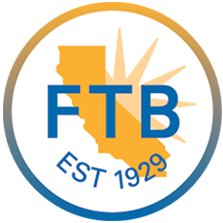
Nonprofit organizations often rely on a variety of funding sources to support their operations. This often include donations, grants, sponsorships, and advertising. However, when it comes to sponsorships and advertising, nonprofits must carefully navigate specific tax rules outlined by the IRS. Doing so help them to avoid jeopardizing their tax-exempt status. Understanding the key differences between advertising and qualified sponsorships is essential for compliance with nonprofit advertising and sponsorship rules. This article explores these distinctions and provides a guide to the relevant tax implications.
Understanding Nonprofit Advertising and Sponsorship Tax Rules
For tax-exempt organizations, the IRS distinguishes between advertising and qualified sponsorships. Generally, this distinction is based on the nature of the exchange between the nonprofit and the sponsor.
Advertising refers to activities that promote a company’s products, services, or facilities. It typically includes:
- Endorsements or inducements to purchase the sponsor’s products or services.
- Qualitative or comparative language that promotes the sponsor’s products./li>
- Listings of price information or discounts for products and services./li>
If a nonprofit receives payment for providing advertising, it is generally considered unrelated business income (UBI). And is subject to unrelated business income tax (UBIT). The IRS taxes this income to ensure that nonprofits do not engage in excessive commercial activities outside of their mission.
Qualified sponsorships, on the other hand, involve payments made by a sponsor without the expectation of a “substantial return benefit” beyond the use or acknowledgment of the sponsor’s name or logo. For example, a nonprofit may display a sponsor’s logo on event materials without incurring tax liability. However, if the nonprofit provides advertising-like benefits, such as promotional messages or calls to action, the IRS may classify this income as taxable.
Difference Between Unrelated Business Income (UBI) and UBIT
Under IRS regulations, nonprofits can generate income through unrelated activities. But those revenues may be subject to UBIT if they do not further the organization’s tax-exempt mission. For example, if a nonprofit is promoting products or services in a manner similar to for-profit businesses. Then, the income is considered unrelated to the nonprofit’s charitable purpose.
Unrelated Business Income Tax (UBIT) is applicable when the activity:
- Is not substantially related to the nonprofit’s exempt purpose.
- Generates income from a trade or business.
- Is regularly carried out.
Even if advertising revenue is used to support the nonprofit’s mission, the IRS treats this income as unrelated. Unless it directly contributes to the organization’s core objectives.
Sponsorship Rules and Safe Harbors
Nonprofits can receive qualified sponsorship payments without worrying about UBIT. Of course, the benefits offered to the sponsor must be limited to the recognition of their name, logo, or slogan. This recognition can occur through:
- Acknowledgments in printed materials or event programs.
- Displaying the sponsor’s logo on a website or at an event.
- Mentioning the sponsor in a newsletter or during an event.
However, if the nonprofit provides significant promotional value to the sponsor, the payments may become taxable as UBI. To help nonprofits stay compliant, the IRS has set up safe harbor provisions that outline acceptable forms of sponsor acknowledgment, including:
- Value-neutral descriptions of the sponsor’s products or services.
- The sponsor’s contact information or location (such as addresses or websites).
- Displays of the sponsor’s established slogan, as long as it isn’t promotional.
It’s important to note that payments related to the exclusive use of a nonprofit’s logo or trademark may still be classified as UBI and taxed accordingly.
Common Examples of Advertising vs. Sponsorship
At this point, you can why it’s important that you understand the nonprofit advertising and sponsorship tax rules. To clarify further, here are examples of each.
Example 1: Advertising
A nonprofit sells space in its newsletter for $500. And the sponsor uses the space to include a promotional message and prices for its products. The IRS considers this advertising, which is subject to UBIT.
Example 2: Qualified Sponsorship
A company donates $10,000 to sponsor a charity’s fundraising event. In return, the nonprofit includes the company’s logo on event materials. They also publicly thanks the company during the event. Since this is acknowledgment without a call to action or promotional message, it is not subject to UBIT.
Best Practices for Nonprofits
To minimize the risk of incurring UBIT on sponsorship or advertising revenues, nonprofits should:
- Avoid offering promotional benefits to sponsors. Keep acknowledgments value-neutral.
- Consult IRS guidelines regularly to ensure compliance with the latest tax rules.
- Work with tax professionals who understand nonprofit tax regulations. Doing so ensures that sponsorship agreements and advertising contracts are properly structured.
Conclusion
Navigating nonprofit advertising and sponsorship rules requires a thorough understanding of IRS regulations. Advertising income is often subject to UBIT, while qualified sponsorships may be exempt if handled correctly. By following best practices and distinguishing between advertising and sponsorship activities, nonprofits can continue to raise funds without risking their tax-exempt status.
This guide should serve as a foundation for understanding nonprofit advertising and sponsorship tax rules. However, given the complexity of these regulations, it is always advisable for nonprofit organizations to seek legal or tax counsel to ensure compliance with the law.
You may also enjoy reading: 6 Tax Issues to Consider If You Are Getting Divorced







